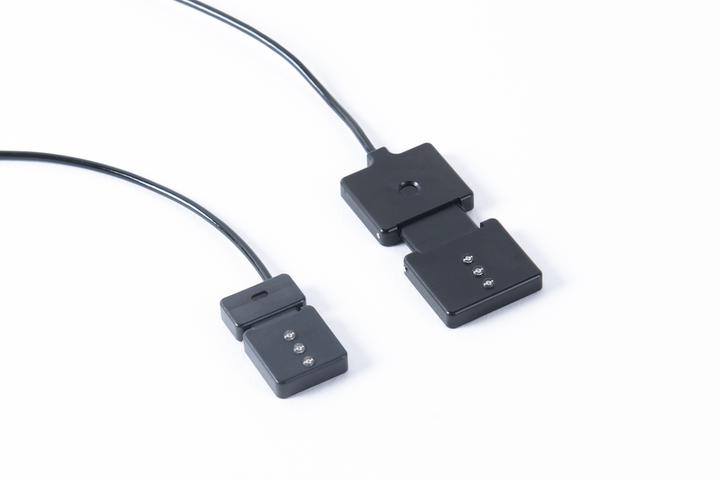
Publications using the PortaLite
Influence of the combination of end-expiratory breath hold training and inspiratory muscle training on performance in artistic swimmers.
This study explored the effects of combining repeated-sprint training with end-expiratory breath-hold (EBH) and inspiratory muscle training (IMT) on cardiorespiratory fitness and performance in artistic swimming. In a quasi-experimental study, …
Relationships between cognitive appraisals of threat and challenge, psychophysiological responses, and clinical performance during high-stress simulated osces
Introduction In healthcare education, Objective Structured Clinical Examinations (OSCEs) are often utilised as a practical assessment tool and can cause marked elevations in psychophysiological stress levels for students. Cognitive Appraisal Theory …
Affective and cerebral haemodynamic responses to audiovisual stimuli during exercise above and below the ventilatory threshold
Audiovisual stimuli during exercise can improve affective and perceptual responses; however, the factors moderating this benefit as well as the associated cerebral haemodynamic responses remain largely unexplored. Accordingly, the present work …
Cold Water Immersion: Simultaneous Assessment of Cerebral Oxygenation, Vascular Function, and Thermoregulatory Responses
Introduction Developing a greater understanding of how the body reacts following cold water immersion (CWI) and its impact on human performance is required for the development of future monitoring technologies and countermeasures to reduce …
Synthetic-data-driven LSTM framework for tracing cardiac pulsation in optical signals
Optical monitoring of cardiac pulsations using near-infrared spectroscopy (NIRS), photoplethysmography (PPG), and diffuse correlation spectroscopy (DCS) is often hindered by motion artifacts and noise. We introduce a synthetic-data-driven framework …
Towards accurate penetration depth estimation in near-infrared spectroscopy: a quantitative analysis of source-detector distance dependence in porcine kidney models
Understanding the depth of penetration of near-infrared (NIR) light in biological tissue is critical for enhancing clinical applications of near-infrared spectroscopy (NIRS). The current knowledge of NIRS penetration depth primarily stems from …
594PEvaluating oxygen saturation and recovery dynamics in skeletal muscle during exercise in adults with spinal muscular atrophy
Spinal muscular atrophy (SMA) is a recessive genetic disorder marked by a deficiency in SMN2 protein, primarily affecting lower motor neurons and the neuromuscular junction, leading to muscle weakness and fatigue. While neuronal and neuromuscular …
595PCuidAME: state of the Spanish longitudinal registry of SMA patients in 2025
CuidAME, the Spanish national registry for Spinal Muscular Atrophy (SMA), was created in 2020 to collect real-life data after the arrival of innovative therapies: Nusinersen (Ns, available in Spain since 2018), gene therapy Onasemnogene abeparvovec …
596PReal-life experience with risdiplam in a Brazilian spinal muscular atrophy cohort followed for up to 9 months
Spinal muscular atrophy (SMA) is a progressive neuromuscular disease characterized by muscle weakness and wasting due to motor neuron degeneration. It may present anywhere from birth up to adult life. Risdiplam is an oral splicing modifier of SMN2 …
597PAligning functional scales with neurophysiological biomarkers in adult SMA: guiding clinical and research scale selection
Neurophysiological biomarkers such as Compound Muscle Action Potential (CMAP) and Motor Unit Number Index (MUNIX) are increasingly recognized as objective tools to monitor disease status in spinal muscular atrophy (SMA). However, their relationship …
Functional and brain activation changes in females with subcortical subacute stroke captured through functional near infrared spectroscopy: a case series
Background Females have worse functional outcomes than males after a stroke including worse standing balance, slower gait speed, and higher fatigue levels. The current understanding of stroke recovery mechanisms has not yet been able to explain why …
Hemodynamic responses of the prefrontal cortex following cold water immersion during an eyes-closed balance assessment
Purpose This study aimed to examine the impact of cold water immersion (CWI) on balance and the corresponding hemodynamic responses that occur within the prefrontal cortex (PFC). Measuring PFC activation during balance will identify cognitive …
Navigating the brain: How cerebral blood flow shifts with task complexity
Monitoring middle cerebral artery blood velocity (MCAv) during maneuvers known to alter cerebral perfusion, such as supine-to-standing transitions or walking, may provide a more comprehensive assessment used to flag individuals susceptible to …
Blood flow restriction exacerbates muscle deoxygenation and fatigue during sport climbing specific finger flexors resistance training
Purpose Low-load blood-flow resistance training (LLBFRT) is increasingly used as an alternative to high-load resistance training (HLRT) to improve muscle strength and endurance while reducing mechanical stress on tissues. However, the acute responses …
Cardiorespiratory and oxygenation responses in iron-deficient anemic women during whole-body exercise under moderate hypoxia
Purpose Integrated physiological responses during maximal whole-body exercise, such as cycling, under additive hypoxemia (anemia + hypoxia) are not adequately studied. Therefore, we investigated cardiovascular, muscular and cerebral oxygenation …
Functional and Neurophysiological Changes After Activities-Based Locomotor Training in Children With Cerebral Palsy: Case Series
Purpose: The purpose of this case series was to explore the feasibility and impact of a 3-week activities-based locomotor training (AB-LT) program on functional activities and neurophysiological adaptations in 5 children with cerebral palsy (CP). …
The Emotional and Cognitive Effects of Synchronizing to Music During Acute Exercise: An fNIRS Study
Synchronizing movements to music enhances exercise performance and enjoyment, yet its short‐term effects on attention and cognition remain underexplored. This study examined the influence of synchronous music, asynchronous music, and a no‐music …
Changes in prefrontal hemodynamics and mood states during screen use: a functional near-infrared spectroscopy study
Screen use has been associated with poor cognitive and mental health, yet few studies have examined its effects on brain activity. Our aims were to describe changes in brain activity and mood states following brief exposure to screen-based content; …
Diving behaviour and physiology of the Korean Haenyeo
There is a long history of breath-hold diving cultures in East Asia, with references in Japanese chronicles as early as the third century BC. Given evidence of genetic adaptations for phenotypes associated with enhanced diving capacity within such …
Using Functional Near-Infrared Spectroscopy to Elucidate Neurophysiological Mechanism of Action of Equine-Assisted Services: Proof-of-Concept Study
Equine-assisted services (EAS) are used for civilian and military trauma survivors to reduce depression and posttraumatic stress symptoms. While early scientific evidence supports the benefits of EAS, the neurophysiological mechanisms underlying …